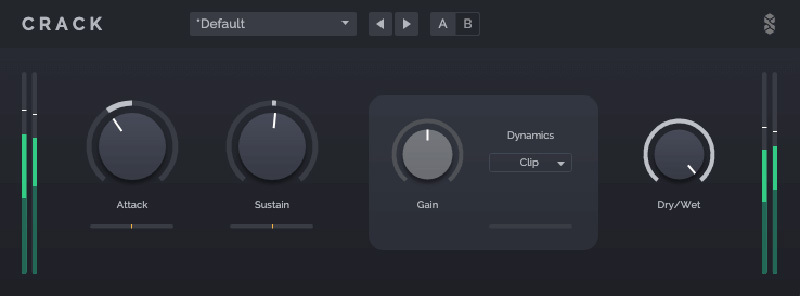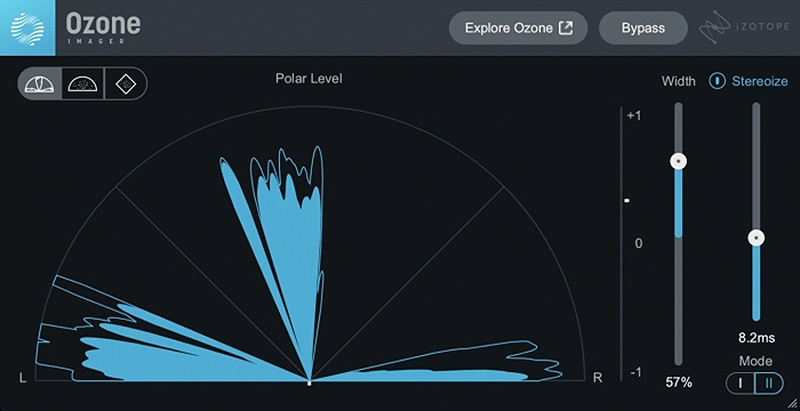Blog
How to Optimize your Music for Social Media
24 Feb '2023
Make sure your music is ready to be played on Instagram, Tik Tok and other social media platforms

Social media is a powerful tool for promoting yourself and your music to the masses, or at least it can be when implemented correctly. Over half of the world’s population uses social media in one form or another, so it’s important to ensure that your music is optimized to have the right impact on your desired audience. In this article, we’ll take a look at some of the key considerations to make when preparing your music to go out into the world of social media.
Trimming your tracks
With so much online content at users’ fingertips, people’s attention spans are getting shorter and shorter. For this reason, it’s crucial that what you’re posting is concise and grabs the attention of your target audience.
While some artists are tackling this problem by reducing the intro length of their music at the arrangement stage, that might not be a suitable solution for your latest 9 minute marathon techno track. At the same time, you may not want to show only a fraction of the masterpiece you’ve spent so long on, and that’s where the power of editing comes in.

Creating social media track edits
While radio edits serving as shortened versions of tracks are nothing new, you can go a step further and condense some choice sections of your music down to a minute or so, with fades in and out. This may help to keep your audience engaged while they get a feel for the track’s various sections. Additionally, some social media platforms have video duration restrictions designed to keep content snappy and to the point, so it’s important to stick within those.
For example, Instagram stories can be up to 15 seconds long, while Instagram feed videos can be up to 60 seconds long. Twitter, Tik Tok and Facebook don’t face the same restrictions, with their max video duration being 140 seconds, 180 seconds and 240 minutes respectively.
While this approach may work for individual tracks, what about promoting an EP or full length album? Well, you can apply the same concept to bigger projects, but with smaller snippets of each track. For example you could include 4 to 16 bars of multiple different tracks in a highlight reel format. Not only will this keep things interesting for your audience, but it gives you the opportunity to showcase a wider range of your work in one place.
Mixing for social media
As well as the duration and the structure of the music you’re posting, it’s also key to consider its mix characteristics. While you may have tirelessly honed the original mix to push club sound systems to their limits, your audience is unlikely to get the same experience when listening out of their phone speakers.

Unfortunately, there is no real substitute for listening to music in its intended location on a full range speaker system, but there are some adjustments you can make to maximize your audience’s listening experience.
Reinforcing your bass
The first major casualty your mix will suffer when transitioning from monitors to mobile, is its low end content. The size of phones’ inbuilt speakers mean they are unable to accurately replicate frequencies below a certain range, leaving your bass sounding thin and lifeless if even audible at all. This issue can be tackled by adding gentle saturation to your bass, thus introducing harmonics that may be more audible when listening on phone speakers.

Alternatively, adding a second bass layer an octave higher can help to reinforce the original bass element if a playback system doesn’t extend down as far as needed. Similarly, ensuring your kick drums have a clicky transient will help them to shine through a mix on even the smallest sound systems.
Taming harsh high frequencies
On the other end of the frequency spectrum, high frequency content may sound more prominent, thus creating the perception of a tinny or thin mix. While gently EQing the high end to combat particular frequencies may solve this problem, it may also affect the overall balance of the track in unwanted ways. Instead, you could use a dynamic EQ to only reduce the level of selected frequencies when they reach a certain volume, leaving the rest of the mix intact.

Furthermore, if transients in the upper frequencies sound piercing out of small speakers, a transient shaper could be used in conjunction with the above EQ techniques to tame particularly harsh elements such as hi hats or snares. Of course this is not a one-size-fits-all approach, so trial and error is key here.

Fortunately, Loopcloud has a fully parametric four-band EQ to help you to get the best out of your samples. Download the free 14-day trial here.
Checking your mix
Additionally, some social media platforms and mobile devices may automatically sum stereo mixes to mono, which can introduce unwanted phasing issues if they aren’t dealt with before the mastering stage. Checking your mix in mono is always good practice, regardless of the final playback system. There are a wealth of available tools which enable you to check your mix in mono such as Ozone Imager, Ableton’s Utility device, or any plugin with a ‘mono’ switch.

If you do uncover any nasty phasing issues, you can try soloing elements in order to identify where your problems lie. Once you’ve identified the issues, you can seek to remedy them using a spatial imaging plugin or mid/side EQ.
The above factors underline how a “mobile-friendly” mix may help to preserve the tonal balance of the original version when listening back on mobile devices. A quick way to reference and adjust your mix on mobile speakers is using Audiomovers’ Listento plugin, an innovative package that allows you to live stream full HD audio from your DAW to your mobile device via web or app. This negates the need to repeatedly adjust, export and upload multiple versions of your mobile mix until you get it right.
Alternatively, Audified’s Mixchecker software promises to emulate a wide variety of playback devices at the click of a button, including mobile phones, car speakers and in-ear headphones.

In addition to adapting the frequency content of your mix, it may also be worth adjusting its overall volume to be more suitable for social media. Unfortunately, there is mixed information as to how different platforms handle audio. This is partly caused by phone manufacturers and social media companies regularly changing their standards, so as a rule of thumb it is best to stick to the most up-to-date loudness standards for online streaming, and more importantly - always check how your audio sounds in a draft post before you publish it!
Monetizing your music
Before you publish your productions in any context, it’s vital that you have all the appropriate clearances and permissions for any samples that your work may contain. This goes for streaming platforms as well as YouTube and social media. While you’ve got the green light for any samples you’ve sourced from Loopcloud’s vast royalty free sample library, samples taken from elsewhere may require you to seek prior clearance from the rights holder.
Modern technology allows streaming services as well as social media platforms to automatically take down or mute content which it deems to have breached copyright regulations. This will not only hamper the promotion of your work, but it may even incur fines and fees if the original rights holder takes legal action.
Opting in for social video monetization
Once you’re happy that your productions aren’t going to cause you any legal issues, it’s also worth ensuring that your work is being monetized correctly. Social media platforms such as Facebook, Instagram and Tik Tok all allow users to add a song to their posts, and you can make your music available to social media users by using a music distribution service.

Services such as Distrokid, Tunecore and Landr not only distribute your productions to streaming services but also make them available to a number of social media platforms as well as the likes of Youtube and Shazam. All you need to do is check that your chosen distribution service can upload to your desired channels, then opt into social video monetization when you submit your work. Then each time your music is added to a video, your distribution service will collect any royalties due on your behalf.

